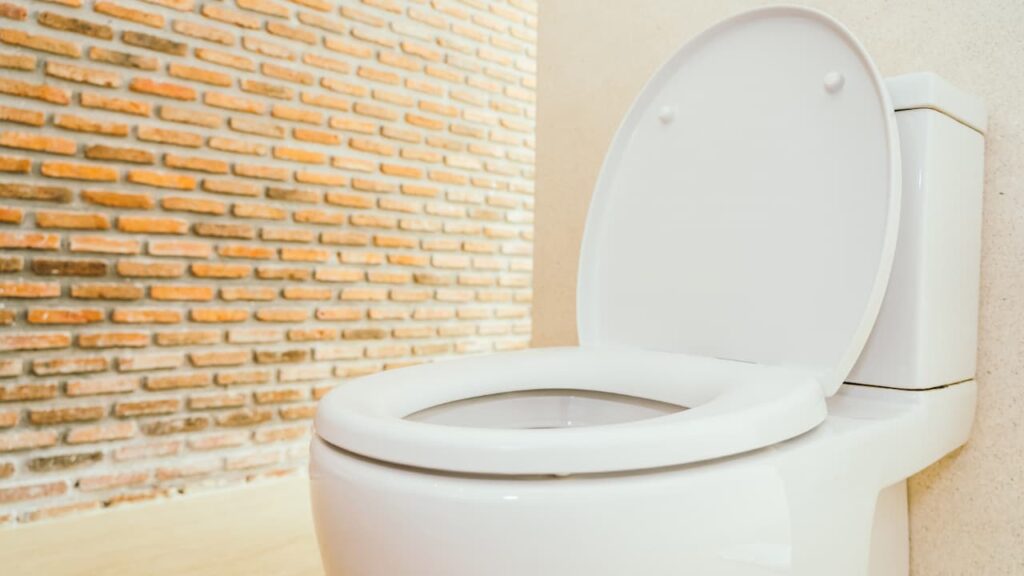Gas Leak: Why It Happens and What to Do
Gas leaks are a serious safety hazard that can lead to devastating consequences if not addressed promptly. From explosions and fires to health complications…

Dealing with a loose toilet seat can be frustrating. Not only does it make using the toilet uncomfortable, but it can also pose a safety hazard. Fortunately, tightening a toilet seat is an easy fix that you can do yourself.
This guide will explore how to tighten toilet seats effectively, ensuring comfort and safety in your bathroom. Whether you’re dealing with loose bolts or improper installation, we’ll help you understand how to fix that pesky toilet seat.
Toilet seats can become loose for many reasons. One of the most common causes is the repeated motion of raising and lowering the seat. Over time, this can cause the bolts to loosen. Other reasons include:
Before you start fixing your loose toilet seat, gather the necessary tools. Having the right tools on hand will make the process much easier and quicker.
Fixing a loose toilet seat is usually a quick process. Depending on the severity of the wobble, it may only take a few minutes. However, if the seat is in poor condition, it might be best to consider replacing it altogether. Here’s a step-by-step guide on how to fix that loose toilet seat:
Here’s a step-by-step guide on how to tighten a toilet seat effectively. Follow these instructions to restore stability to your toilet seat.
Before you start, make sure you have all the necessary tools ready. This includes your screwdriver, pliers, and adjustable wrench. Having everything within reach will make the process smoother.
Next, find the bolts that secure the toilet seat. Some bolts are exposed, while others are hidden under plastic covers. Carefully pry these covers open using your screwdriver to reveal the bolts.
Make sure the toilet seat is properly aligned with the bowl. If it appears off-center, adjust it before tightening. A well-aligned seat is crucial for comfort and stability.
Using your screwdriver, tighten the bolts in a clockwise direction. If the bolt spins and doesn’t tighten, use your pliers to grip the nut underneath while you turn the bolt above. This will help secure the seat firmly.
After tightening, check the stability of the seat. Gently shake it to see if it wobbles. If it still feels loose, you may need to tighten the screws a bit more. If the screws are stripped or damaged, consider replacing them.
If your toilet seat is beyond repair, replacing it is a simple process. Here’s how to do it.
Start by unscrewing the bolts that hold the old seat in place. You may need to hold the nuts underneath the bowl with pliers while you unscrew the bolts from above. Once unscrewed, carefully remove the old seat.
Before installing the new seat, clean the area around the bolt holes. This will remove any dirt or residue that could interfere with the installation of the new seat.
Place the new seat on the toilet bowl, ensuring the bolt holes line up with those on the bowl. Proper alignment is key to ensuring the seat fits snugly.
Insert the bolts through the holes of the new seat. Secure them with the nuts from underneath. Use your screwdriver to tighten the bolts clockwise until they are snug. Hold the nuts with pliers to ensure they don’t spin if necessary.
Once the new seat is installed, ensure it is stable and properly aligned. Adjust it if needed, and give the bolts a final tightening.
There’s no strict rule on when to replace a toilet seat. A toilet seat should last anywhere from five to ten years, depending on usage and material. For example, padded toilet seats tend to wear out quicker than those made of wood or plastic due to cracking and discoloration. Regularly checking your toilet seat for stability can help you determine when it’s time for a replacement.
If you’re still struggling with a loose toilet seat or other plumbing issues, it might be time to call a professional. Local plumbing services, like TaskPro, can inspect your toilet and provide expert advice. We can recommend the best toilet seat for your home and offer additional plumbing services anywhere in British Columbia areas like Burnaby, Delta, and White Rock.
A wobbly toilet seat can lead to leaks and water damage in your bathroom. If the seat is loose, the bolts may also be compromised, leading to more serious plumbing issues if not addressed.
While a loose toilet seat may not pose an immediate danger, ignoring it can lead to more significant problems over time. A wobbly toilet can eventually cause leaks or even structural damage.
To ensure a toilet is seated correctly, carefully rock it from side to side and front to back. It may need adjustments to prevent leaks and ensure stability if it doesn’t sit flat.
Share this Guide
Gas leaks are a serious safety hazard that can lead to devastating consequences if not addressed promptly. From explosions and fires to health complications…
Septic tanks are a vital component of wastewater management systems, particularly in areas where municipal sewer systems are unavailable. These underground structures treat and…
Choosing the right toilet for your home is more than a simple decision; it’s an investment in comfort, efficiency, and functionality. The type of…